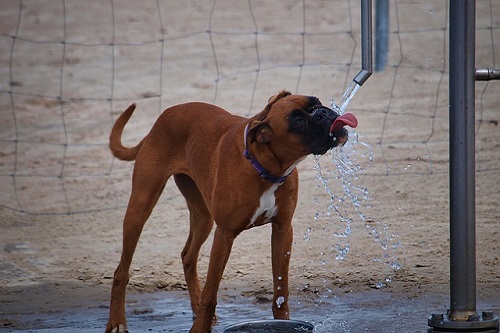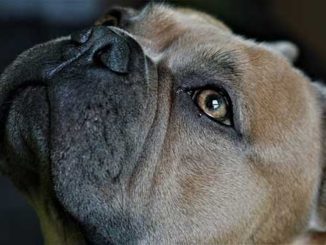With the advent of summer season in a tropical country like India, effects of heat stress in livestock and household pets are commonly observed. The changes in the environmental temperature to a higher side cause the animals to show the inability to adapt to it physiologically, and hence its effects are physically observed.
Dogs are one of the favorite animals to be kept as pets in the Indian households. Although they are kept with utmost sincerity taking care of all their needs, it is due to the summer stress of increased temperature that their temperament changes and they begin to show the symptoms of uneasiness. These symptoms, if not properly taken under observation by the owner, may become detrimental to the life of their dog.
Symptoms
Symptoms of heat stress in dogs are excessive panting, drooling of saliva, vomition, diarrhea, redness of gums, mental dullness or loss of consciousness, incoordinated movement and collapse. Many a times, high fever is also observed and organ failure can also be an end result of heat stress in dogs. Breeds like pug are more susceptible to heat stress because they cannot perform panting as efficiently as other breeds due to their flat faces.

Diagnosis by the owner
Dry nose and sunken eyes is a signature of dehydration due to heat exhaustion in dogs. The saliva that drools out from the mouth of the dog under heat stress is much thicker than the normal, hence can be identified by its owner. Redness of gums is a mark of excessive dehydration, which would be easily visible. High fever causes increase in pulse rate of the dogs under severe heat stress, which can be easily checked by the owner time to time to know whether the dog is suffering from heat stress or not. Also, the dog becomes lethargic or can tumble on the objects in its way due to incoordinated gait caused by dehydration. Unconsciousness and death may take place in extreme cases.
Treatment
At home, owner should immediately take its pet suffering from heat stress to the cooler areas of the house. In severe cases, veterinarian must be immediately called. Till the veterinarian arrives, tap water should be used to cool its body with more water being applied to its paws and around the ears.
Position the dog under a fan to cool its body. Periodically, the owner should check the temperature of the dog. If the dog’s body temperature comes to the normal, the dog should be provided with cool water to drink.
Treatment of heat stress by a veterinarian is done by administering fluid therapy which depends on the extent of dehydration and body weight of the animal. Metronidazole infusion therapy is done against diarrhoea. Along with it, symptomatic medications like anti-diarrhoal (loperamide) and anti-vomition (ondansetron) are administered. Corticosteroids are administered on priority basis to prevent shock. Other complications are treated as per the condition of the dog.
Prophylaxis of the heat stress
Prevention of heat stress in dogs is necessary to prevent any further deviations in their health. To prevent heat stress, the owner should prevent the dog to be outdoors for too long during the hours of high temperature. Moreover, walks with the dog during these times of high temperature must be prevented. Ample amount of cool drinking water along with electrolytes in it must be provided to the dog throughout the day during summers. If the dog is left at home, it should be made sure that it must be housed in the coolest part of the house. Nutritious diet must be provided to the dog throughout summers. Many times it has been seen that owners carry their dogs along with them in their cars. During summers, it must be kept in mind not to leave the dogs in the cars parked outdoors under the sun as it may lead to heat stroke in dogs and then death. Owner should always be in touch with a veterinarian regarding health status of his dog and must take the dog to the vet for periodic check-ups.
Hence, we can see that heat stress can be fatal to dogs if proper care is not taken by the owner. Keeping a check on any of the symptoms indicating heat stress must be given a top priority by the owner and must immediately be taken care of by him in synergy with a veterinarian. Aforementioned methods of primary treatment and prevention should be used by him to nullify the effects of heat stress, only then would this summer season pass happily for his dog and him too.
| The content of the articles are accurate and true to the best of the author’s knowledge. It is not meant to substitute for diagnosis, prognosis, treatment, prescription, or formal and individualized advice from a veterinary medical professional. Animals exhibiting signs and symptoms of distress should be seen by a veterinarian immediately. |







Be the first to comment